January 2021
Welcome
Welcome to the January issue of the USAPEEC ASEAN Regional Newsletter.
This newsletter seeks to provide readers with useful product and major market information for institutional and consumer users of U.S. poultry. Readers will find a variety of general market information, activities as well as useful product information in every issue.
This month's issue:
Contents
-
Market News
- Ushering in the Year of the Ox
- Students Impress Judges at first U.S. Powdered Egg Bake Off
- U.S. Festive Poultry Promotion at The Sapling
-
Food Service
- Food Waste Gets A New Life
-
Industry Trends
- Developing A Taste For Tech
- Alternative Protein Explodes in Asia
-
In The Region
- ASEAN News in Brief
Additional Market Information Available
We have updated our website to include more information on market reports and export documentation guidelines.
You can visit our ASEAN website at: www.usapeecasean.com
|
Ushering in the Year of the Ox
On February 12, the Lunar New Year will usher in the Year of the Ox, as celebrants look forward to a fresh, new year after a turbulent 2020. The Lunar New Year marks the first new moon of the lunisolar calendars, traditional to many Southeast Asian countries including China. The Ox, symbolic of hard work, strength and earnestness is highly respected in Chinese culture. According to the calendar, the year holds positive energy with no catastrophic events on the horizon, making 2021 a prosperous foundation for economic recovery and growth.
The Lunar New Year is celebrated over 15 days, with the last day culminating in the first full moon after the Spring Festival, also known as yuán xiāo jié (first night of the full moon). In parts of China, where the holiday is called Spring Festival, bright floral arrangements and fruit trees liven up homes and streets. Peach and apricot blossoms hold special significance for the celebration of Tết in Vietnam which coincides with the Lunar New Year. In Korea, decorative cranes symbolize longevity. Singaporeans typically soak in the festive mood with celebrations across the island. From streetlight-ups, lanterns and fireworks in Chinatown, to colorful processions, seasonal markets and lively lion dances in the heartlands, it’s a joyous occasion to celebrate with friends and family, and enjoy a sumptuous feast together.
Red is the color of choice, believed to bring good luck and good fortune to all. Homes and commercial properties are decorated with red banners and lanterns, with touches of gold accents. Red packets containing cash are presented to young children and unmarried adults by elders. Brand new clothes featuring the season’s colors add to the vibrancy of the celebrations.
Festive Traditions and Feasting
The heart of the Lunar New Year is always a celebration when family and relatives gather around the dining table. The traditional Reunion Dinner is held on the eve of the new year. Family members (pre-COVID) usually rush back home (from overseas) to share this most important meal of the year with loved ones. The following days are spent visiting relatives and friends, feasting and sharing blessings for a fruitful year ahead. Some common foods eaten during the new year are:
Prosperity Salad: No celebration is complete without a big helping of Yu Sheng at any family or business gathering. Also known as lo hei or prosperity toss, the ritual involves a group of people gathered around a massive plate, tossing ingredients of a colorful raw fish salad with green radish, fish, shredded carrot, plum sauce, peanuts and spices. Each ingredient represents wealth, good health and happiness, and as each component is added, wishes of luck and prosperity are uttered loudly. These ingredients are then tossed up in the air and mixed. The higher they are mixed and lifted, the more prosperity it will bring.
Fish: Representing an increase in prosperity, the Chinese word for fish, “Yu” sounds like ‘surplus’. Everyone looks forward to receiving a surplus at the end of the year. The belief is that if you’ve managed to save something by year end, you are likely to make even more in the next year. Fish is often served as a main dish at the dinner table, with the head placed towards distinguished guests or elders. It can be cooked in various ways such as boiling, steaming and braising.
Dumplings: Chinese dumplings are considered lucky food. They symbolize wealth because of their shape which resembles a silver ingot (a form of Chinese currency). Dumplings are filled with minced meat like pork, fish or shrimp, as well as shredded cabbage, bamboo and other vegetables. These can be boiled, steamed, fried or baked.
Glutinous Rice Cake: Glutinous rice cakes are sweet treats consumed during the new year, consisting of sticky rice, sugar, chestnuts, Chinese dates and lotus leaves. In Chinese, the word for glutinous rice cake is “Niángāo” which means “getting higher year by year”. The cake is synonymous with a higher business position or income.
Longevity Noodles: These very long noodles represent a long and happy life. They are uncut during preparation, and diners are encouraged to consume them as whole as possible. Longevity noodles are either fried and served on a plate or boiled and served in a bowl as part of a broth.
Good Fortune Fruit: These are usually oranges, tangerines and pomelos that are exchanged as token gifts among friends and family. The shape of the fruit (round) and color (golden) represent fullness and wealth. Many Chinese like to eat and display tangerines and oranges as the pronunciation and the look of these words are similar to the word for ‘success’. Pomelos are believed to bring continuous prosperity.

Festive streetlights and red lanterns to welcome the New Year
(Photo: REUTERS)

An assortment of good luck and good fortune foods

Yu Sheng – The higher the toss, the more the prosperity
(Photo: DestinAsia)
|
|
Students Impress Judges at first U.S. Powdered Egg Bake Off
USAPEEC, in collaboration with SHATEC, a premier hospitality and culinary institute initiated a series of educational programs to introduce U.S. Powdered Eggs to students enrolled in the pastry and baking course. The programs equipped students with knowledge on the poultry industry, types of U.S. poultry products and eggs available, and their versatility in local and Western cuisine. A masterclass facilitated by well-known industry chef, Edwin Leow held on October 30, presented students with a hands-on experience to further reinforce the utilization of powdered eggs in a variety of pastry and desserts. Chef Leow’s demonstration of the Yuzu Ivory Chocolate Whipped Ganache Sable and Lemon Tea Cake captivated the students who appreciated the opportunity to learn from the master himself. Following the masterclass, SHATEC held its first pastry competition on November 21, testing the creativity and skills of the students in preparing cakes using U.S. Powdered Egg as the main ingredient. Chef Leow and Chef Edmund Toh served as guest judges, alongside USAPEEC’s Ms. Margaret Say and Mr. Michael Tan of M&D Prize Foods. The winning cake was featured as part of a three-week long promotion at The Sapling from December 7-26.

Pastry decorating is an art as demonstrated by Chef Leow
(Photo: SHATEC Times)
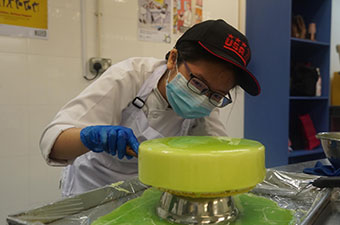
From baking to the finishing touches

The winning entry - NUSA Entremet with coconut mousse, hazelnut sponge and mango passion confit
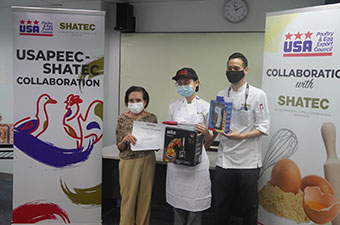
The winner, flanked by Margaret Say and SHATEC’s Gerald Cheok at the awards ceremony
|
|
U.S. Festive Poultry Promotion at The Sapling
A three-week promotion held December 7-26, 2020 at The Sapling restaurant (SHATEC), offered a variety of festive goodies. From Roasted Whole U.S. Turkey with Sage & Chestnut Stuffing, Cranberry Sauce and Giblet Dressing, Roasted Herb Chicken with Rosemary Jus, U.S. Turkey Roulade with Sage Stuffing, and Honey Glazed Boneless U.S. Turkey Ham with Pineapple Raisin Sauce to pastries like Merry Red Velvet Log Cake, and Chocolate Crinkle Cookies, the promotion proved to be a hit among lunch and dinner patrons. And to celebrate the new year, SHATEC dished out another special menu promotion (December 28-31) featuring the Two-way U.S. Chicken served with Honey Mustard.
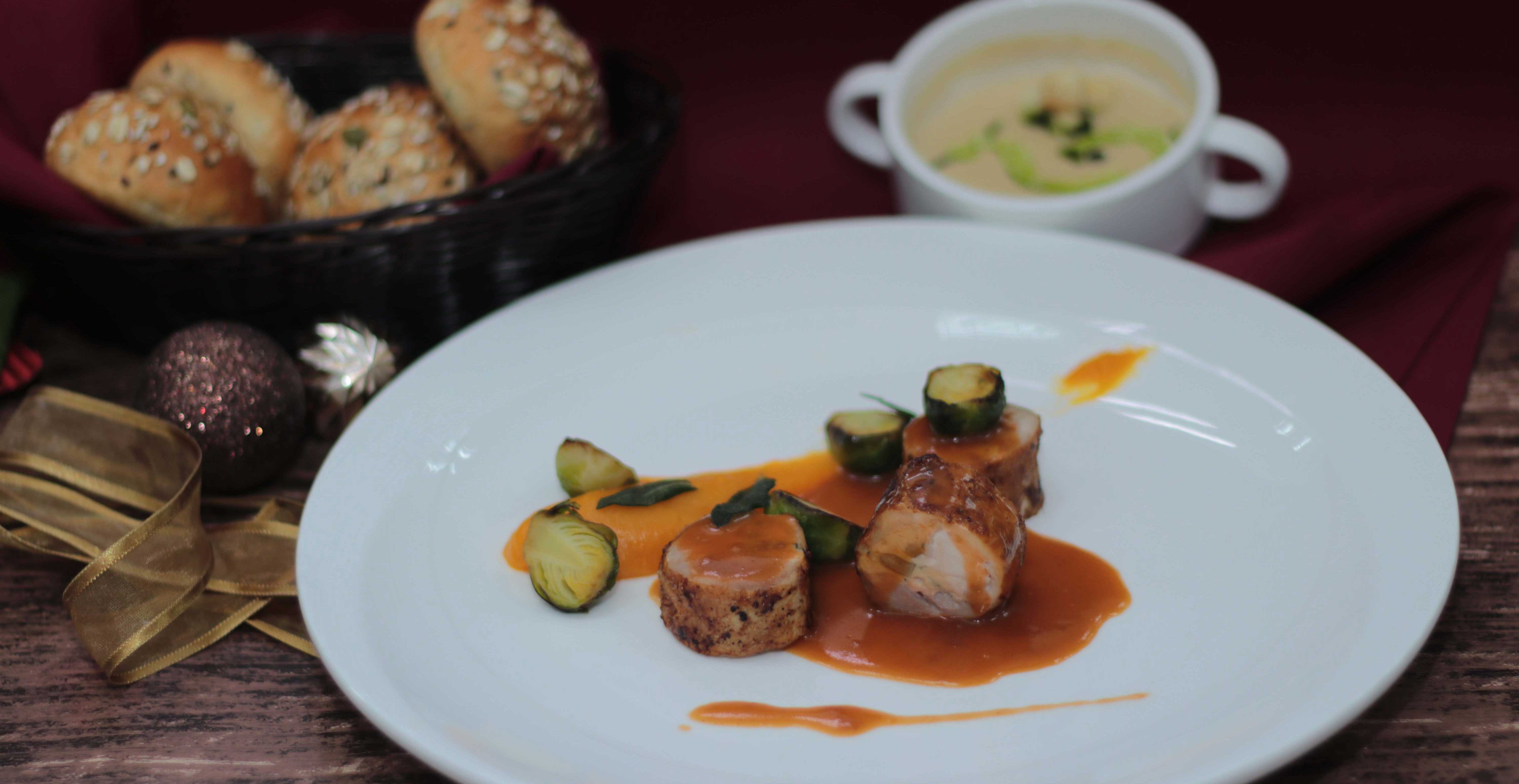
U.S. Turkey Roulade with Sage Stuffing, Pumpkin Mash, Brussels Sprouts, Giblet Gravy
|
Food Waste Gets New Life
Asia is responsible for generating over 50% of the global food waste, with the main culprits being industrialized urban areas in the region. While household food waste is part and parcel of the problem, businesses are also responsible for disposal of edible food throughout the supply chain. Governments are heavily invested in new innovations to stamp out food wastage in Asia.
The COVID-19 pandemic is also pushing for a more sustainable agenda, framed around ethical responsibility and global environmental concerns. A recent global survey commissioned by FMCG Gurus showed that the pandemic had intensified and altered consumer purchase patterns with 60% of customers now being more observant of their consumption impact on the environment.
In the U.S., there is a massive effort to reduce food waste through packaging made from neglected and underused parts of ingredients. Additionally, food is being upcycled from ingredients that would have otherwise be considered as food waste.
Savour!, a Singapore-based tech social enterprise, is a one-stop B2B e-commerce marketplace. The web and mobile app is giving food waste new life by connecting retailers, importers and other organizations to acquire expiring, blemished, and surplus food at a corporate bulk discount. To date, the organization has over 1,000 platform listings and about 140 merchants and B2B customers, including restaurants like Grain, and non-profit organizations like Beyond Social Services and the Salvation Army.
In a bid to prevent fruit and vegetables from being rejected at supermarkets, SG Food Rescue, Food Rescue Sengkang and Food Bank are upcycling fresh, blemished or non-alethically pleasing produce. Consumers tend to turn a blind eye to food that are deformed, or have an unusual color, shape or size, causing supermarkets to either reject or throw away perfectly useable goods before these reach the dinner table. Volunteers diligently scour through more than 30 food stores, collect boxes of unwanted goods and transport them to 10 distribution points as well as soup kitchens and charitable organizations across Singapore.
In the Philippines, innovation has struck again to lend a helping hand. Mapua University student, Carvey Ehren Maigue won the first James Dyson Award (an international design competition) for turning rotten food into renewable energy. The 27-year-old created a renewable energy system for windows and building walls, called the AuREUS that uses energy from the sun’s UV light and the bioluminescent compounds found in rotting fruit, vegetables and crops damaged by natural disasters to transform waste crops into electricity.
Though its arguable that much work still needs to be done to tackle the global issue of food wastage, the future of food innovation is well on its way to turn ‘ugly’ food into good use. Asia, however, still needs to abide by a more stringent and far-sighted approach towards food waste management.

CEO Katrina Lee shows off Savour!, an app to reduce food wastage
(Photo: NUS News)
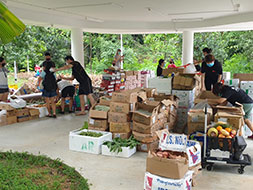
Collection and distribution of surplus food items to the needy
(Photo: Food Rescue Sengkang)

The AuREUS design converts rotten food into renewable energy
(Photo: Dezeen)
|
Developing a Taste For Tech
Having undergone several advancements in the past decade, and recently withstanding a deadly pandemic, the F&B industry has emerged as one of the most resilient sectors in Asia. To cope with a competitive market and rising costs, the food manufacturing and service sector is proactively seeking new ways to not only meet the sector’s labor-intensive needs, but also attract a new generation of consumers. Food producers are rapidly transforming their business by integrating breakthrough technological innovations such as robots and artificial intelligence, to improve food quality, output and flexibility.
Here’s how some players are developing a taste for robotics:
Bowl & Bowl is Singapore’s first Robot Café serving a variety of fried rice and porridge bowls, made-to-order in under two minutes. Owner of the eatery, Yang Ming was pressured to introduce robotics in his kitchen, as he faced the time-consuming and tedious challenge of finding, retaining and training manpower. Patrons visiting the futuristic café are simply bowled over by robotic frying pans scrambling eggs and stir-frying these with steamed white rice, finely chopped spring onions, and other toppings like edamame, chicken, prawn, smoked duck, black pepper beef and salmon. A station worker plates the dish for eager customers. Many diners have also taken to social media to share their experience - rating the fried rice bowls as ‘surprisingly good’.
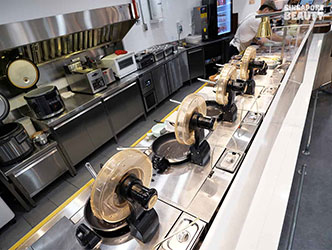
Robotic frying pans at Bowl & Bowl
(Photo: Singapore Beauty)
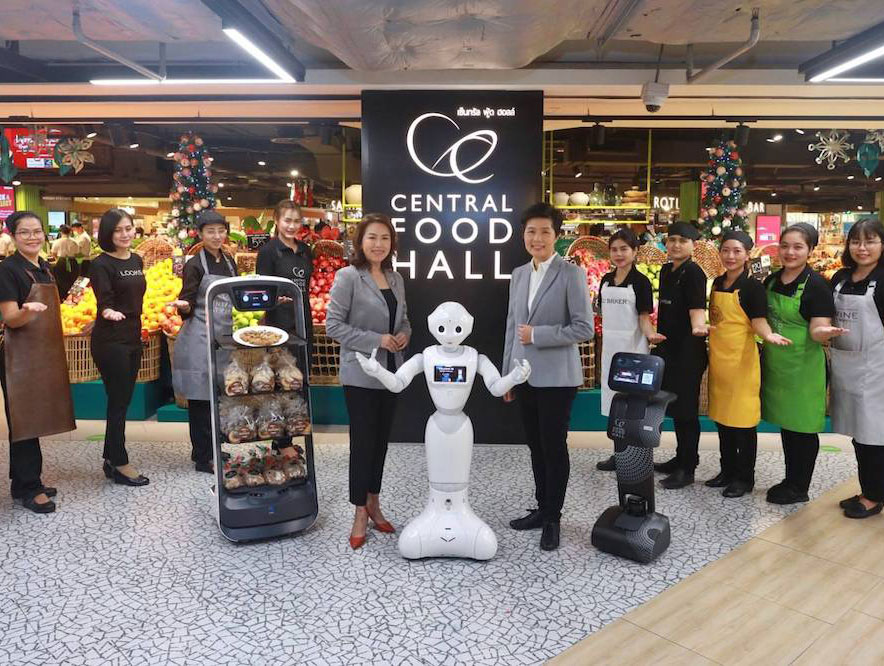
Smart robots at Bangkok’s Central Food Hall Lat Phrao
(Photo: Retail In Asia)
Similar to restaurants, supermarkets and hypermarts are drawing consumers with augmented reality, flashy displays and multi-sensory experiences. In Thailand, Central Food Retail has opened its 12th Central Food Hall in Lat Phrao, offering an assortment of more than 30,000 products. The new food hall features Smart Product Sampling Robots, as well as a customer assistant robot called ‘Nong Sukjai’, assisting with Thai Chana (an application designed to trace COVID-19 infections) check-ins, guiding customers through the various shopping zones, and recommending special promotional items. In the U.S., Walmart has also started testing robots in its stores to check on pricing issues, inventory management, and shelf irregularities
In China, the Qianxi Robot Catering Group (Qianxi Group) has opened a restaurant, operated completely by robots. The Country Garden eliminates most human-to-human contact in its bid to curb the pandemic. The organization has built a centralized kitchen with the complete industry chain encompassing back-end supply production, robotic cooking, restaurant operation and management. The restaurant has over 20 robots equipped to serve a variety of dishes, including Chinese cuisine, fast food, clay-pot rice and hot pot.
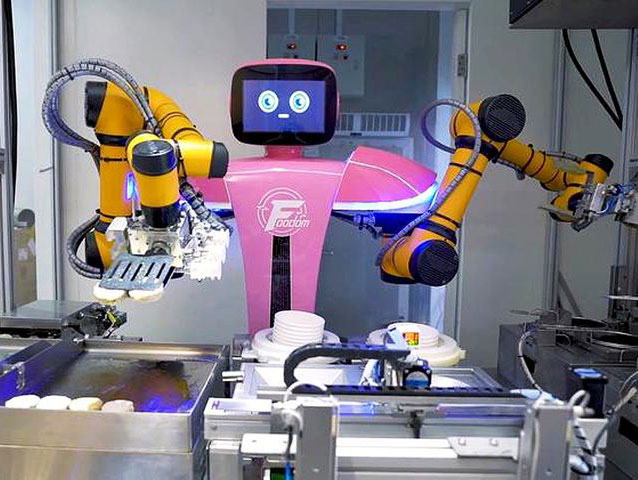
Meals powered by Robot chefs at The Country Garden, China
(Photo: Yicai Global)
|
|
Alternative Protein Explodes in Asia
An acute rise in the preference for sustainable, healthy, and long-shelf-life foods, has seen the popularity of less resource-intensive alternative proteins skyrocket in the region. Growing consumer demand has already seen an emergence of plant-based options and an increased preference for frozen and canned meats. The market is now introducing out-of-the-ordinary offerings such as cultured meat or cell-based meat, liquid and powdered eggs and insect-based proteins.
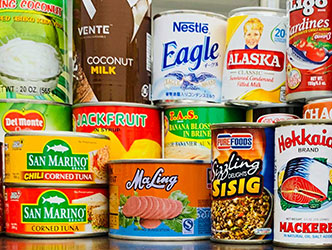
Surge in demand for canned meats sparked by the pandemic
(Photo: Akabane Bussan)
Canned Meat is Back!
Once regarded as poor man’s food, the booming digital economy has flipped the perception of processed or frozen food, as canned and retort meats make a comeback to the region. As home cooking gains popularity with growing consumer interest in health and wellness, Director of Global Innovation at Thai Union Group, Dr Thayawat Kasemsuwan says the renewed spotlight on canned meats has spurred growth as consumers gravitate to shelf-stable canned meats, which they now perceive as safe, affordable, with a longer shelf-life. Similarly, in the Philippines, with the extended movement restrictions, the demand for canned meats has hiked.
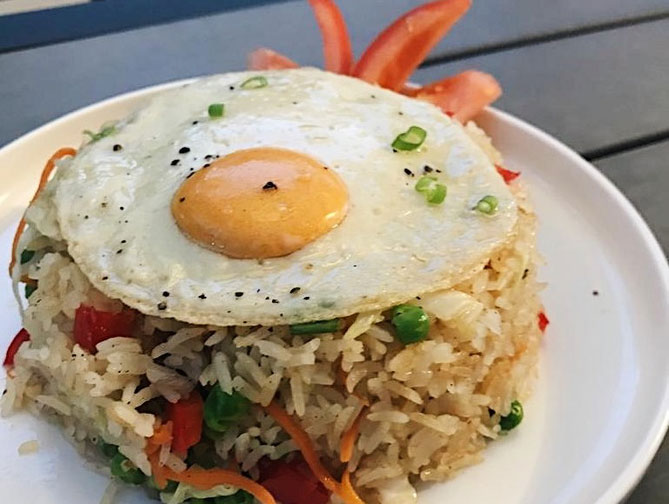
OnlyEg caters to all kinds of cuisine
(Photo: Mothership)
Nutrient Packed Whole Egg Substitute
As part of ongoing efforts to meet 30% of its nutritional needs with local production, Singapore is encouraging the use of processed eggs. This has also given rise to food substitutes. Local start-up, Float Foods recently launched its plant-based whole egg substitute. Made with legumes, OnlyEg is Asia’s first commercial plant-based whole egg substitute offering an egg yolk and egg white replacement. The company is currently working with the Agency for Science, Technology and Research (A*Star) to increase the protein level of OnlyEg to boost its nutritional value, and include other benefits like cholesterol, hormone, and antibiotic-free.
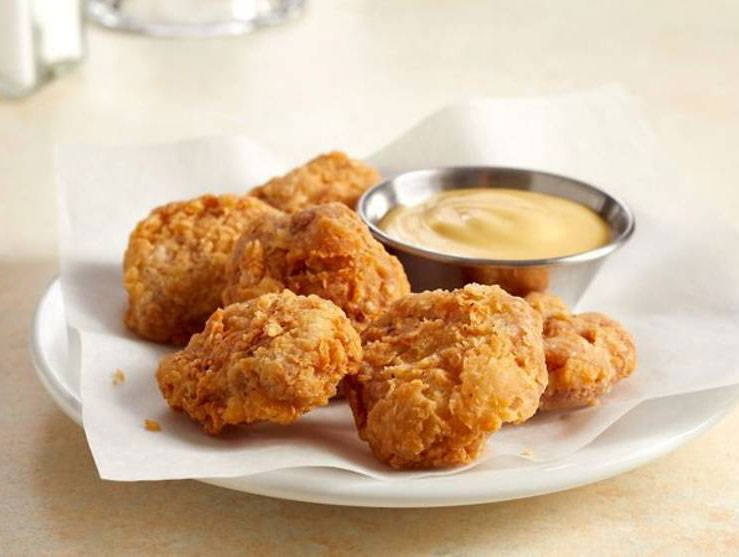
Lab-grown chicken developed by Eat Just
(Photo: REUTERS)
Lab-Grown Meat Gets Approval
Globally, more than two dozen firms are currently testing lab-grown products (fish, beef and chicken) hoping to break into the alternative meat market. Asia is already ahead of the curve as authorities in Singapore have given American-based start-up, Eat Just, the world’s first regulatory approval to sell its lab-grown chicken meat. Compared to plant-based substitutes, the ‘clean’ or ‘cultured meat’ is grown from animal muscle cells in a lab. The meat in the form of chicken nuggets will be priced at premium chicken prices when it launches in the first quarter. Meanwhile, Shiok Meat plans to launch its cell-based lobster meat - Shiok Lobster Gazpacho and Terrine of Shiok Lobster and its shrimp products in 2022.
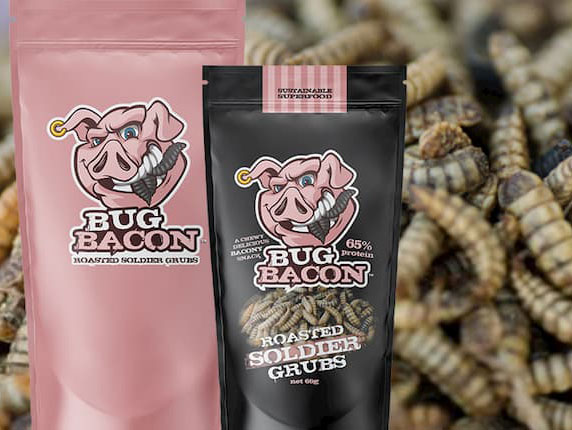
Bug Bacon’s protein rich Roasted Soldier Grubs
(Photo: B2B Cambodia)
Insect Protein Spreads Its Wings
With the global population estimated to increase to 10 billion by 2050, food manufacturers are confronted with a range of challenges to increase production by as much as 70%. To tackle the growing demand, analysts and producers are now exploring insects as proteins. Last year, Cambodian-based insect snack company, Bug Bacon marketed its first product featuring the black soldier fly grubs. The insects contain B-vitamins, omega-3, omega-6, zinc, calcium and iron. The company expects the insect protein market to spill into mainstream market as a popular food staple by 2030.
|
![]() Cambodia
Cambodia
New Expansion of Texas Chicken
Texas Chicken is raising the bar on the chicken quick-service restaurant (QSR) experience with the launch of its first restaurant in Phnom Penh in December 2020. Offering its signature menu, complete with the latest restaurant image designs, the opening reflected the competitive new global positioning of the brand. The exclusive franchise agreement with TH F&B Co. Ltd will leverage the company’s existing infrastructure throughout the country, as well as its operational expertise from the management of over 10 global F&B brands in Cambodia.
![]() Indonesia
Indonesia
Taco Bell debuts in Jakarta
U.S. fast food chain Taco Bell has opened its first franchise in Jakarta. The store in Senopati, South Jakarta is the brand’s first flagship in the Asia-Pacific region featuring staples such as tacos, burritos and other classic Mexican foods. Indonesia’s strong food culture, adventurous spirit and appetite for trying new things makes it an ideal market for the company. The Mexican-inspired franchise is owned by Yum! Brands, the parent company of KFC and Pizza Hut, and will also debut in Malaysia, with the opening date and precise location yet to be announced.
![]() Singapore
Singapore
Burger chain Carne to open its doors in February
Well-known Argentinian chef, Mauro Colagreco, is partnering with the Il Lido Group to open hamburger chain Carne in February. Chef Colagreco first launched Carne in Buenos Aires in 2016. The hamburger bar in Singapore will be the chain’s first outlet outside of Argentina. Located in Amoy Street, the eatery will offer local beers from artisanal breweries and burgers. Combo sets, including fries, salads and drinks will also be available. The brand will also feature premium and sustainable ingredients including 100% grass-fed beef from producers who use regenerative grazing techniques for the soil, cage-free eggs, organic vegetables and hormone-free bacon. Packaged ingredients are said to have no artificial preservatives, chemicals or coloring.
Meidi-ya opens at Millenia Walk
Japanese flagship supermarket Meidi-ya opened the doors to its new outlet at Millenia Walk in November. The two-storey outlet comprises a bakery, cafe, food hall, along with a standalone wine and liquor store. The Gokoku bakery features wholesome freshly-baked pastries made from traditional Japanese flours and grains. Selections include Chicken Amakara Burger, Teriyaki Chicken & Egg Sandwich, Salmon Cheese Gokoku Komeko Pan, and more. The Japanese Concept Cafe and Bar serves affordable refreshments like Latte, Kirin Ichiban, and Iced Java & Ceylon Tea. The Food Hall promises a selection of constantly changing food options, prepared in-house.
New hotels open doors despite pandemic
Despite travel restrictions and low visitor arrivals, new hotels are sprouting in Singapore. New entries include the Dusit Thani Laguna Singapore, Mint Hotel by One Farrer Hotel, and the Parkroyal Collection Marina Bay by the Pan Pacific Hotels Group. The next two years will see more hotels like The Clan by Far East Hospitality, Citadines Connect, Edition by Marriott, and Pullman Singapore, reflecting hoteliers’ confidence in Singapore. According to the Urban Redevelopment Authority, plans for more than 8,600 new hotel rooms are currently in the pipeline. Singapore has reciprocal green lane arrangements for short-term essential business travel with various countries.
![]() Thailand
Thailand
CP Foods targets Asian markets with new Chicken Rib product
To meet the growing demand for health and safety, Charoen Pokphand Foods (CP Foods) is set to export its ‘Chicken Rib’, a healthy special cut chicken product, across Asian markets. CP is the first company in Thailand to make the special cut. The Chicken Rib is a single thin bone that is easy to grab, like a mid-joint wing, and is tender, meaty and juicy like a thigh. The product is made from animals raised with bio-secure high-tech farming in a closed system, air-conditioning, and computerized farm, in line with internationally accepted animal welfare standards. The chickens are fed probiotics and high-quality feed from CP’s feedmills. The farming practices further enhance the birds’ physical and mental health during their time at the farm, and the rib is free from antibiotics and growth hormones.
![]() Vietnam
Vietnam
E-commerce market to reach USD 13.1 bn in 2020
Driven by its young population, growing middle class and rising internet and smartphone penetration, Vietnam is one of the fastest growing e-commerce markets in Asia-Pacific. According to GlobalData’s E-Commerce Analytics, the pandemic and social distancing measures have further accelerated the country’s e-commerce growth. E-commerce sales are expected to increase at a CAGR of 18.8% and reach USD 26 billion between 2020 and 2024. COVID-19, which triggered the fear of contamination, has resulted in a change in consumer buying behavior. Shopping centers are being shunned to a large extent, as consumers opt for the comfort and security of online platforms for their day-to-day purchases.
|
|
Disclaimer: All opinions and views expressed in the articles published in the newsletter are those of the individual journalists and do not necessarily reflect those of the publisher, the newsletter's sponsors or USA Poultry & Egg Export Council.
You are receiving this email because you registered to get newsletters from USAPEEC ASEAN.
If you prefer not to receive these updates, please click here to unsubscribe.
Do not reply to this email. For enquiries, go to www.usapeecasean.com
® USA POULTRY & EGG EXPORT COUNCIL
541 Orchard Road, #15-04, Liat Towers, Singapore 238881 Tel: (65) 67371726 Fax: (65) 67371727
Representative Office registered in Singapore